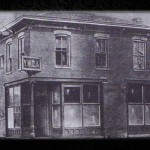It’s well established that politics in early twentieth-century Indianapolis was dominated by the Ku Klux Klan.
At the same time, however, significant foundations were being laid for the civil rights movement. Even before the founding of the NAACP, an Indianapolis institution came to serve as a crucible for integration.
An African-American group founded in 1900, the Young Men’s Prayer Band obtained official recognition by the national YMCA by 1905. The new “Negro” YMCA branch promptly organized a weekly forum at which local entrepreneurs, educators, and political and religious figures would discuss issues at stake in the black community.
The name “Big Meeting” already claimed by the statewide organization, the black group dubbed its gatherings “Monster Meetings”.
As news of Indiana’s Black YMCA was going national, a development campaign was launched to build the organization’s headquarters. Donations from cosmetics magnate Madam C.J. Walker and Sears executive Julius Rosenwald headlined support from both the black and white communities. Another donor, Booker T. Washington dedicated the Senate Avenue YMCA building on July 1913.
Faburn De Frantz quickly took the helm of the organization, serving as executive secretary until 1952, during which time membership grew from 350 to 5,270. DeFrantz acknowledged his radical reputation: “They say that DeFrantz is too aggressive,” he allowed, “but as long as I stay in this town I shall see to it that the Negro is in the picture of what is going on.”
Under his leadership, the Monster Meetings became one of the nation’s most highly respected public forums, hosting everyone from Eleanor Roosevelt to Thurgood Marshall to Martin Luther King. Other speakers included Jackie Robinson, Paul Robeson, and Langston Hughes.
The meetings’ legislative branch played a critical role in undermining segregation in Indianapolis schools, jobs, housing, and recreational facilities. Advances included the integration of the Indiana High School Athletic Association, and the preparation of anti-hate and anti-segregation bills that were adopted as law in the late 1940s.
The Senate Avenue Y was located at the heart of the Indiana Avenue neighborhood, where, through the 1950s, 30,000 blacks lived within a ten-block radius. Ironically, the integration the Monster Meetings accomplished allowing blacks to settle more freely around the city also dispersed the organization’s base.






















